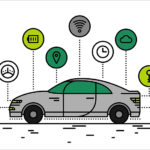Top technology disruptions that businesses may not see coming

Gartner has revealed digital disruptions that organisations may not be prepared for. These include several categories of disruption, each of which represents a significant potential for new disruptive companies and business models to emerge. “The single largest challenge facing enterprises and technology providers today is digital disruption,” said Daryl Plummer, Vice President and Gartner Fellow. “
The virtual nature of digital disruptions makes them much more difficult to deal with than past technology-triggered disruptions. CIOs must work with their business peers to pre-empt digital disruption by becoming experts at recognising, prioritising and responding to early indicators.”
The digital disruptions CIOs may not see coming are:
Real-time language translation
Real-time language translation could, in effect, fundamentally change communication across the globe. Devices such as translation earbuds and voice and text translation services can perform translation in real-time, breaking down language barriers with friends, family, clients and colleagues. This technology could not only disrupt intercultural language barriers, but also language translators as this role may no longer be needed.
“To prepare for this disruption, CIOs should equip employees in international jobs with experimental real-time translators to pilot streamlined communication,” said Plummer. “This will help establish multilingual disciplines to help employees work more effectively across languages.”
Nanotechnology
Nanotechnology is science, engineering and technology conducted at the nanoscale — 1 to 100 nanometers. Nanotech is used to create new effects in materials science, such as self-healing materials. Applications in medicine, electronics, security and manufacturing herald a world of small solutions that fill in the gaps in the macroverse in which we live.
“Nanotechnology is rapidly becoming as common a concept as many others, and yet still remains sparsely understood in its impact to the world at large,” said Plummer. “When we consider applications that begin to allow things like 3D printing at nanoscale, then it becomes possible to advance the cause of printed organic materials and even human tissue that is generated from individual stem cells. 3D bioprinting has shown promise and nanotech is helping deliver on it.”
Swarm intelligence
Digital business will stretch conventional management methods past the breaking point. The enterprise will need to make decisions in real time about unpredictable events, based on information from many different sources such as Internet of Things devices beyond the organisation’s control. Humans move too slowly, stand-alone smart machines cost too much, and hyperscale architectures cannot deal with the variability. Swarm intelligence could tackle the mission at a low cost.
Swarm intelligence is the collective behavior of decentralised, self-organised systems, natural or artificial. A swarm consists of small computing elements either physical entities or software agents that follow simple rules for coordinating their activities. Such elements can be replicated quickly and inexpensively. Thus, a swarm can be scaled up and down easily as needs change. CIOs should start exploring the concept to scale management, especially in digital business scenarios.
Human-machine interfaces
Human-machine interface offers solution providers the opportunity to differentiate with innovative, multimodal experiences. In addition, people living with disabilities benefit from HMIs that are being adapted to their needs, including some already in use within organisations of all types. Technology will give some of these people super abilities, spurring people without disabilities to also employ the technology to keep up.
For example, electromyography wearables allow current users who would be unable to do so otherwise to use smartphones and computers through the use of sensors that measure muscle activity. Muscular contraction generates electrical signals that can be measured from the skin surface. Sensors may be placed on a single part or multiple parts of the body, as appropriate to the individual. The gestures are in turn interpreted by an HMI linked to another device, such as a PC or smartphone. Wearable devices using myoelectric signals have already hit the consumer market and will continue migrating to devices intended for people with disabilities.
Software distribution
Software procurement and acquisition is undergoing a fundamental shift. The way in which software is located, bought and updated is now in the province of the software distribution marketplace. With the continued growth of cloud platforms from Amazon Web Services, Microsoft, Google, IBM and others, as well as the ever-increasing introduction of cloud-oriented products and services, the role of marketplaces for selling and buying is gathering steam.
“Establishing one’s own marketplace or participating as a provider in a third-party marketplace is a route to market that is becoming increasingly popular. Distributors and other third parties also see the opportunity to create strong ecosystems and customer bases while driving efficiencies for partners and technology service providers,” said Plummer.
Smartphone disintermediation
The use of other devices, such as virtual personal assistants, smartwatches and other wearables, may mean a shift in how people continue to use the smartphone. CIOs and IT leaders should use wearability of a technology as a guiding principle and investigate and pilot wearable solutions to improve worker effectiveness, increase safety, enhance customer experiences and improve employee satisfaction.

Technology disruptions are taking on a virtual form making it more difficult for C-level executives to pick up explains Daryl Plummer at Gartner.





